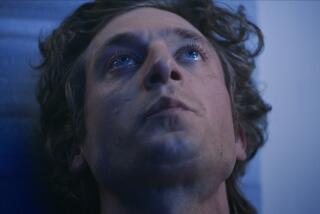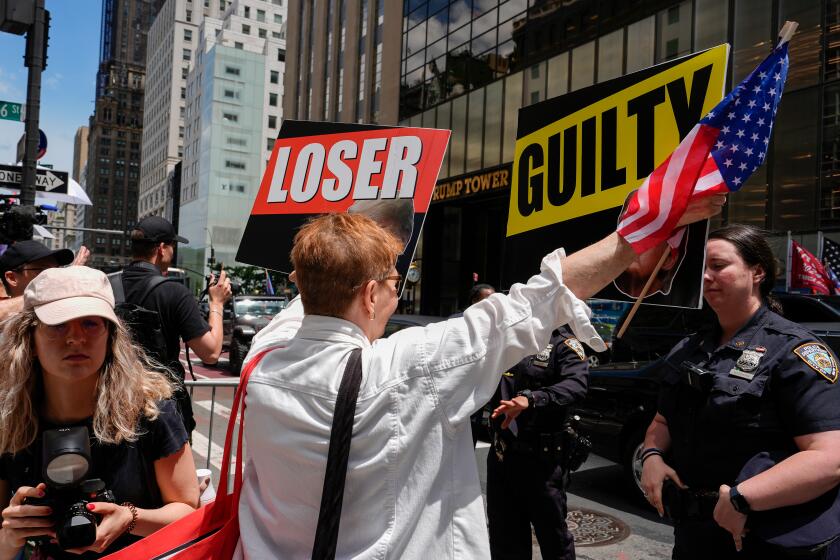Sixtus V: Dynamic Rebuilder of Rome : Art: After a peasant beginning, he matured into a person with a farsighted urban vision. His life and memorabilia are subjects of exhibits.
Born a peasant, Felice Feretti matured into a severe and haughty prelate with piercing eyes, a long white beard and farsighted urban vision.
He became an arrogant and imperious man, “related to the devil,” some claimed. He also became, at age 65, one of history’s most dynamic Popes.
As Pope Sixtus V, he left an indelible stamp on Rome in a frenetic five-year reign from 1585-90, transforming his capital from a medieval hodgepodge into a Baroque showplace.
Now, here come modern Romans to honor the builder Pope with a remarkable two-part thank you. A major exhibition in the Piazza Venezia documents his life and times, and a new museum at the Lateran Palace displays his apartment and memorabilia from the days when the Pope was a temporal as well as a religious leader.
As ruler of the Papal States in central Italy, Sixtus inherited a capital of 100,000 that was broke and lawless, its Renaissance facade stained by a concatenation of seedy alleys brimming with decay and disease, prostitutes and cutpurses.
Within his church, which once had to recall him from duties in Venice as an Inquisitor because he was too severe, Sixtus is best remembered for his reform of the Curia, the Vatican bureaucracy.
Within ancient Roman walls, though, it is Sixtus the builder who counts most. He brought law and order to the Eternal City--if often at the end of a rope--and he brought revolutionary change.
In a remarkable cataract of planning and construction that reinvigorated and transformed the city, Sixtus carved the face that Rome still wears.
The exhibition “Rome of Sixtus V” at the Palazzo Venezia (through April 30) is subtitled “Art, Architecture and the City Between Renaissance and Baroque,” and its contents hew alluringly to their theme.
The architecture is illustrated with models and sketches that show Rome as Sixtus found it, and how it changed at his direction. An easy-on-the-eyes textbook of urban planning, the exhibition features maps, coins, sculptures, manuscripts, musical scores and paintings of the period--and of Sixtus himself. One of the portraits, of a glaring pontiff with a jewel-encrusted red glove, makes plain why Sixtus was not a man with whom even pontiff-wise Romans trifled lightly.
Four centuries later, Sixtus’ stamp on Rome is still clear. It was he who finished the dome of St. Peter’s, construction of the Vatican and of the Vatican Library, and reconstruction of the Lateran Palace.
He laid out a new street plan for Rome, by cutting diagonal thoroughfares across the congested medieval center, uniting the major pilgrim churches. He rehabilitated Roman aqueducts and water courses and dotted the city with fountains that largely survive. The result was to improve living standards, encourage growth and breathe new life into the city. In part, the building craze was driven by his desire to reassert the power of the Pope and the majesty of Rome as symbols of church strength in face of the threat of the Reformationists.
The elaborate and priceless column erected in ancient Rome to salute the Emperor Trajan near the Forum grew to include a statue of St. Peter at its top on Dec. 4, 1587, because Sixtus thought it was a good idea. The next year, he had St. Paul’s statue mounted on the column of Marcus Aurelius.
Along the way, as the exhibition makes clear, Sixtus aligned tall obelisks that ancient Rome pillaged from the Egyptians as beacons for pilgrims at key landmarks like St. Peter’s and the Lateran. They are still where he put them.
So, too, is Sixtus’ chapel in Santa Maria Maggiore, which remains one of the most prominent early examples of the Baroque that became Rome.
As a complement to the show downtown, Sixtus’ papal apartments at the Lateran are also open to the public for the first time as part of the Vatican Historical Museum that adjoins them.
For 10 centuries, until 1303, Popes lived in the hilltop Lateran Palace next to the cathedral that is now the headquarters church of the Church in Rome. Like most of the rest of the city, the Lateran was sagging when Sixtus became Pope. He had it torn down and rebuilt as part of one of the most breakneck building projects since the Caesars’ time.
Sixtus died before he could move into the Lateran, but the apartments were finished anyway, heavy on marble and majesty. They languished for centuries, but were restored in the ‘70s under Pope Paul VI.
Anything that didn’t move was painted--under Sixtus and Paul. The Mannerist frescoes and French tapestries combine in the apartment with period furniture to give an idea of the kind of space and ambience in which Popes lived--and, for that matter, live.
The historical museum next to the apartment is an added treat, featuring arms, uniforms and memorabilia of the days when Popes were also kings. There’s a flag of the Papal Dragoons, the shield of the Pontifical Artillery and a model of the 19th-Century papal gunboat “Immaculate Conception.”
The apartment and museum fuse in a giant ballroom overlooking a 3,400-year-old obelisk. It was there, in 1929, that the Vatican and Benito Mussolini signed the Lateran Treaty ending the temporal authority once wielded so sweepingly over Rome by such Popes as Sixtus.
The exhibition “Roma Sixto Quinto” in the Palazzo Venezia in downtown Piazza Venezia is open daily through April 30. Admission is about $7.50. The Vatican Historical Museum at the Lateran Palace is open until 1 p.m. Tuesday, Thursday, Saturdays and the first Sunday of each month. Admission is about $4.50.
More to Read
The biggest entertainment stories
Get our big stories about Hollywood, film, television, music, arts, culture and more right in your inbox as soon as they publish.
You may occasionally receive promotional content from the Los Angeles Times.






